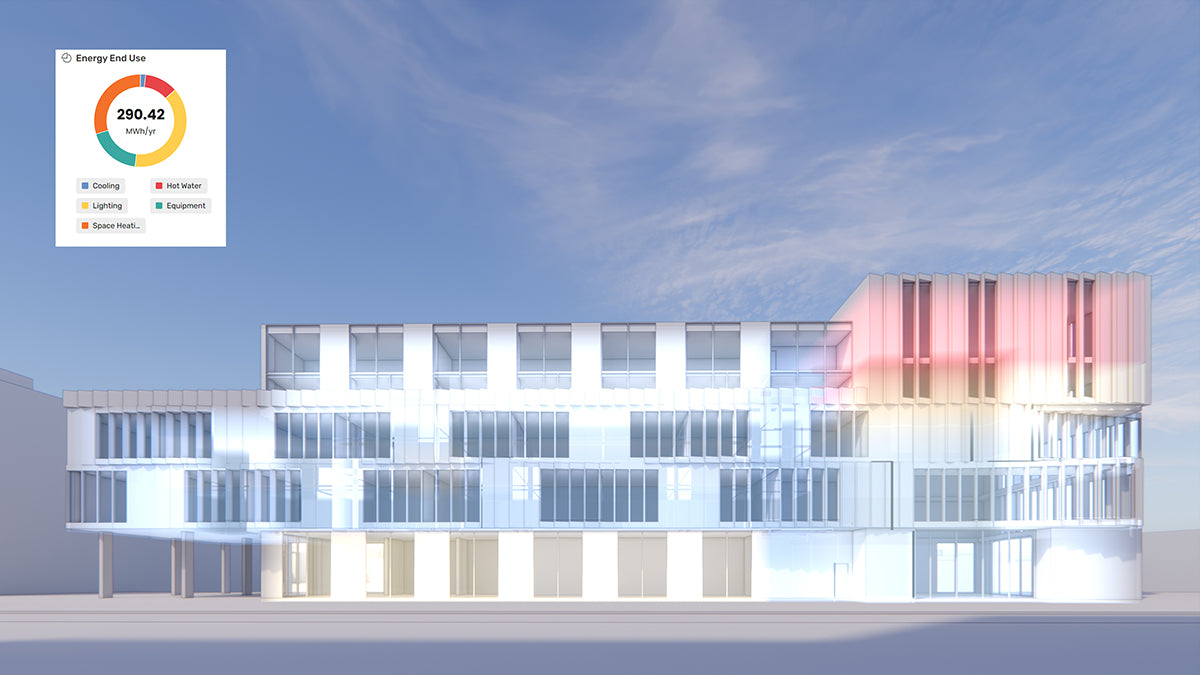Your Cart is Empty
Customer Testimonials
-
"Great customer service. The folks at Novedge were super helpful in navigating a somewhat complicated order including software upgrades and serial numbers in various stages of inactivity. They were friendly and helpful throughout the process.."
Ruben Ruckmark
"Quick & very helpful. We have been using Novedge for years and are very happy with their quick service when we need to make a purchase and excellent support resolving any issues."
Will Woodson
"Scott is the best. He reminds me about subscriptions dates, guides me in the correct direction for updates. He always responds promptly to me. He is literally the reason I continue to work with Novedge and will do so in the future."
Edward Mchugh
"Calvin Lok is “the man”. After my purchase of Sketchup 2021, he called me and provided step-by-step instructions to ease me through difficulties I was having with the setup of my new software."
Mike Borzage
An Interview with Maurice Patel, Autodesk M&E Product Marketing
October 17, 2007 5 min read

Maurice Patel is the head of Autodesk M&E Product Marketing. M&E is the media and entertainment division of Autodesk responsible for the popular products Maya, 3ds Max, and Motion Builder, among others. Maurice has been working in the DCC market for several years and is frequently quoted as an expert. As the market leader Autodesk has incredible power to influence the evolution of those technologies and tools. Those changes will effect not only 3D artists and Digital Content Creators, but also the mechanical design departments of manufacturing companies. In order to learn about the future direction of the market and the status of development I asked Maurice a few questions.
Maurice, can you tell us a bit about yourself and Autodesk M&E?
our mission is to develop solutions that enable our clients to create compelling visual content
Autodesk’s Media and Entertainment division is the leading provider of professional solutions for the film, television, games, manufacturing and architectural design industries. Our mission is to develop solutions that enable our clients to create compelling visual content – high-value content that will drive their businesses. Core to our strategy is the development of innovative 3D and image processing technology to enable creative professionals to generate synthetic images at the highest quality possible whether it be for a AAA games title, a blockbuster VFX movie or a state-of-the-art architectural visualization. Today our products are highly successful and used across the creative production pipeline for 3D, modeling, animation and rendering; 2D and 3D compositing, visual effects creation; editing, finishing and digital color grading.
Personally, I have been with Autodesk for over 6 years and in the M&E business for 12. I currently head up product marketing for Autodesk’s Media & Entertainment solutions. In this role I’m responsible for all product and industry related marketing aspects of the division’s film, television, games and design visualization solutions.
After the Alias acquisition in October 2005, Autodesk started to work on improving the integration between 3ds Max and Maya, focusing mostly on data exchange between the two applications. What has been accomplished so far and what are the plans for the future?
we’ve been working extensively on data interoperability
Indeed, we’ve been working extensively on data interoperability, not just between 3ds Max and Maya but between all Autodesk products as well as 3rd party applications. Core but not unique to that effort has been developing FBX, our open-standard, platform-independent 3D file format, of which we have released several versions in the past two years. FBX technology now supports an incredible variety of 2D and 3D data types and the list of types that it supports is constantly growing. We are of course planning on continuing to expand the workflow between these applications as well as with MotionBuilder, our compositing and visual effects solutions such as Toxik and Flame, other Autodesk products including AutoCAD, Inventor and Revit and 3rd party applications.
3ds Max is used not only in the entertainment industry but also in the manufacturing industry. Despite 3ds Max growing popularity in this area, importing and exporting data from and to a professional CAD system is still a difficult process. Any hints on what Autodesk M&E is doing to address this issue?
our goal is to provide digital continuity in the manufacturing processes from concept design to final ad
3ds Max is a leading visualization solution in the manufacturing industry and both 3ds Max and Maya are used in conceptual modeling. The issue of data import and export is fundamentally an issue of efficiency in the design process, an area that Autodesk is focused on addressing with its Digital Prototyping initiative. The Autodesk Digital Prototyping Solution enables manufacturing workgroups to create a single digital model that can be used in every stage of production, thereby bridging the gaps that exist between conceptual design, engineering and manufacturing. 3ds Max and Maya will help manufactures bring their products to market faster by reusing the Digital Prototyping data created in Autodesk Inventor. 3ds Max can work directly with Inventor and as a result manufacturers and their advertising agencies are able to create ‘synthetic’ or ‘digital’ images and animations of their products for marketing communications – without the need for costly physical prototypes. Ultimately our goal is to continue to eliminate the traditional data barriers or silos that exist in the design process and provide digital continuity in the manufacturing processes from concept design to final ad.
In the past few years Maya and 3ds Max have evolved to become extremely powerful systems for the professional production of high-quality graphical digital content. Many professionals and amateurs cannot afford the cost and don’t need the power and complexity of these tools. Can we envision a split in the 3ds Max product line similar to what we are seeing these days with Inventor and the recently announced Inventor LT?
Well as you know Autodesk does not talk publicly about future product plans. I can say that we have always been (and will continue to be) dedicated to providing professional solutions that equip today’s best artists, designers and visualization experts with the tools they need to bring their most imaginative ideas to life. We will also continue to plan for the future by looking at the various ways that both current and future solutions can meet the evolving needs of our clients.
While Autodesk comes from a tradition of supporting a single platform (Windows), the recently acquired Alias is open to other platforms. On May 2006 Martin Vann (VP Worldwide Sales, M&E) made a public statement about the strategic value of supporting Mac and Linux platforms. Do you still believe that Linux and Mac will play a primary role in the future for the Media and Entertainment sector?
The Mac community is at the heart of creative desktop content creation
Linux and Windows definitely play a primary role. I think it important to point out that this is not recent though, Autodesk has long had a tradition of supporting multiple platforms in the M&E industry and has had UNIX as a primary platform for nearly a decade. In September 2006, we finished the transition of all of our visual effects, editing and finishing, and color grading solutions to the Linux platform (from IRIX). This transition allowed us to offer our clients the best-of-breed in hardware performance and scalability. Autodesk Maya is also available on this platform.
The Mac community is at the heart of creative desktop content creation. We support these artists with Autodesk Maya, a 3D modeling, animation and rendering solution, as well as a desktop compositing application, Autodesk Combustion, and a media mastering and encoding solution Autodesk Cleaner.
You have been working in the media and entertainment field for several years and have witnessed the incredible transformations of this sector from a privileged point of view. Can you share with us your experience and your personal vision for the future?
There are several tends that will continue to drive rapid change in the industry over the next few years. Some important ones are: (1) Continued consolidation and globalization such as the recent Intel acquisition of Havok, (2) Virtualization and integration of processes through such initiatives as Digital Prototyping, BIM and Integrated Practice, (3) Sustainability will be an increasingly important component of the design process and (4) Innovation in tools and technologies for simulation and analysis will continue to prove a challenging and fruitful ground for research given that there are still fundamental unknowns in real world physics as well as complexities in modeling that make accurate, deterministic, simulations difficult.
I would like to thank Maurice Patel for taking the time to answer my questions. A special thanks to Mara Wright and Dennis Phinney for helping me to organize this interview. If you have any questions for Maurice or for Novedge, please leave a comment below and we will be glad to answer.
Franco Folini
Also in NOVEDGE Blog

How the AEC Industry Shifted Towards Essential Sustainable Building Design
August 15, 2024 4 min read
Read More
Unlocking New Realms of Design with Enscape 4.1: Introducing Impact Add-on and Lot More
August 02, 2024 2 min read
Read More
Explore Autodesk Revit 2025.2: New Features and Enhancements for Enhanced BIM Workflows
July 30, 2024 3 min read
Read MoreSubscribe
Sign up to get the latest on sales, new releases and more …


